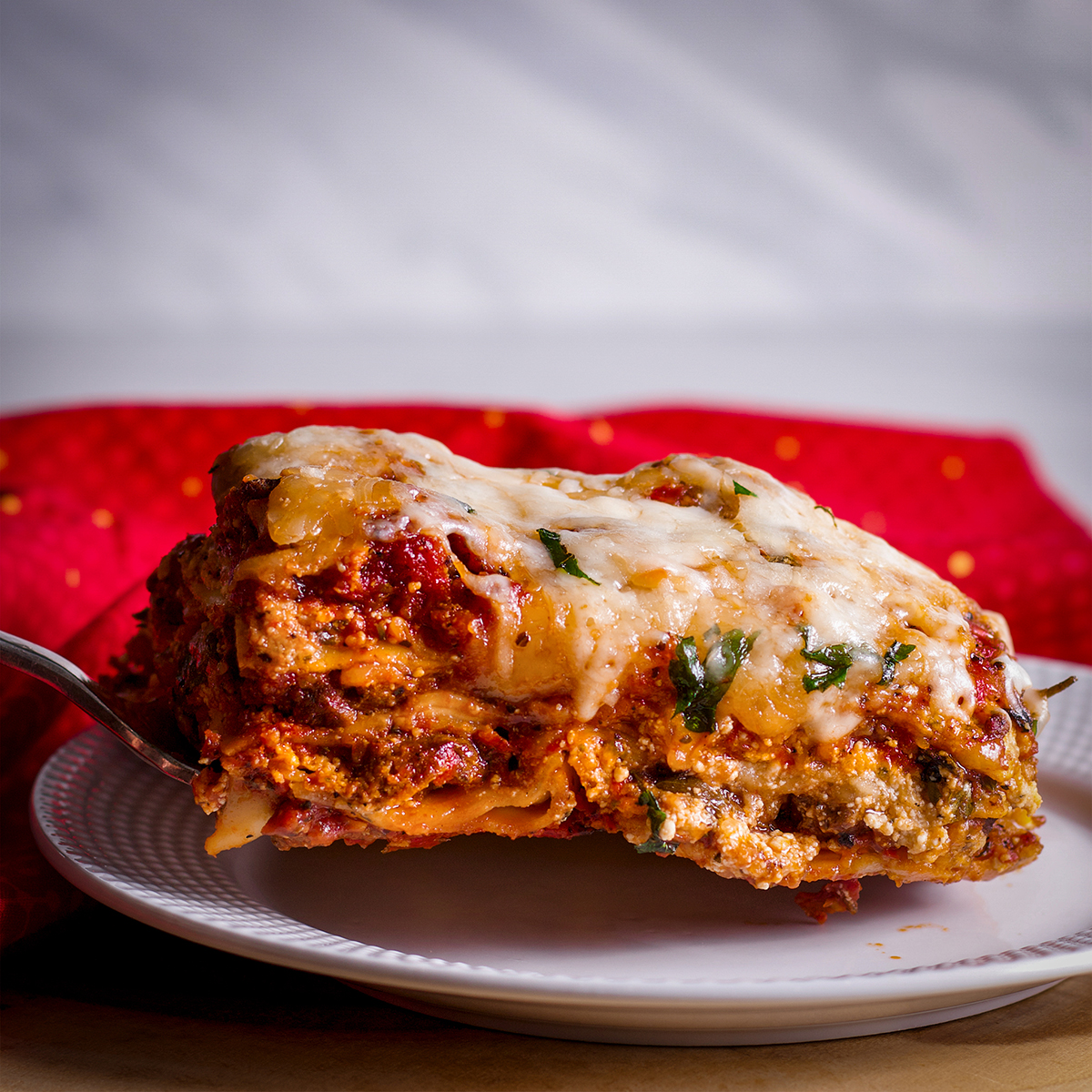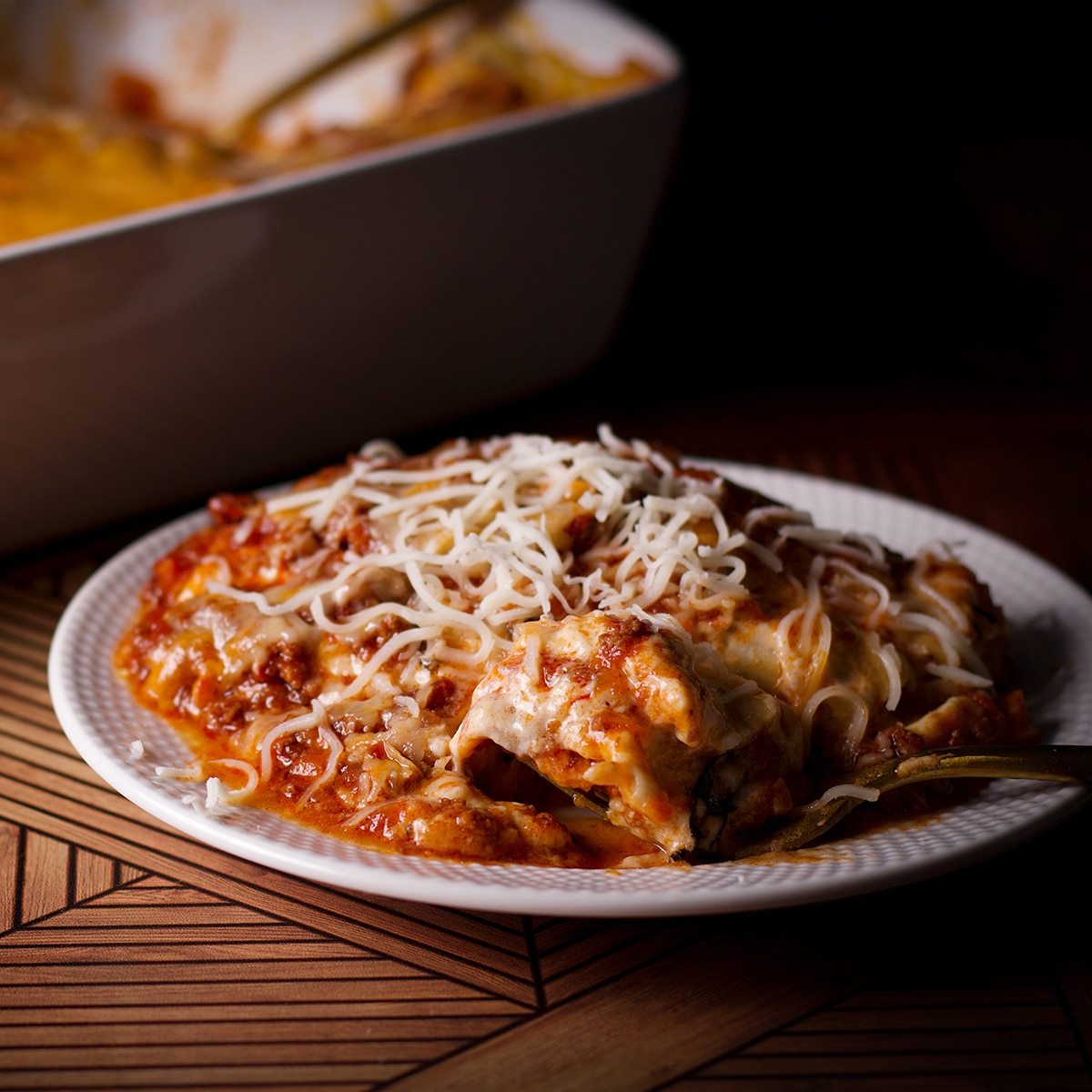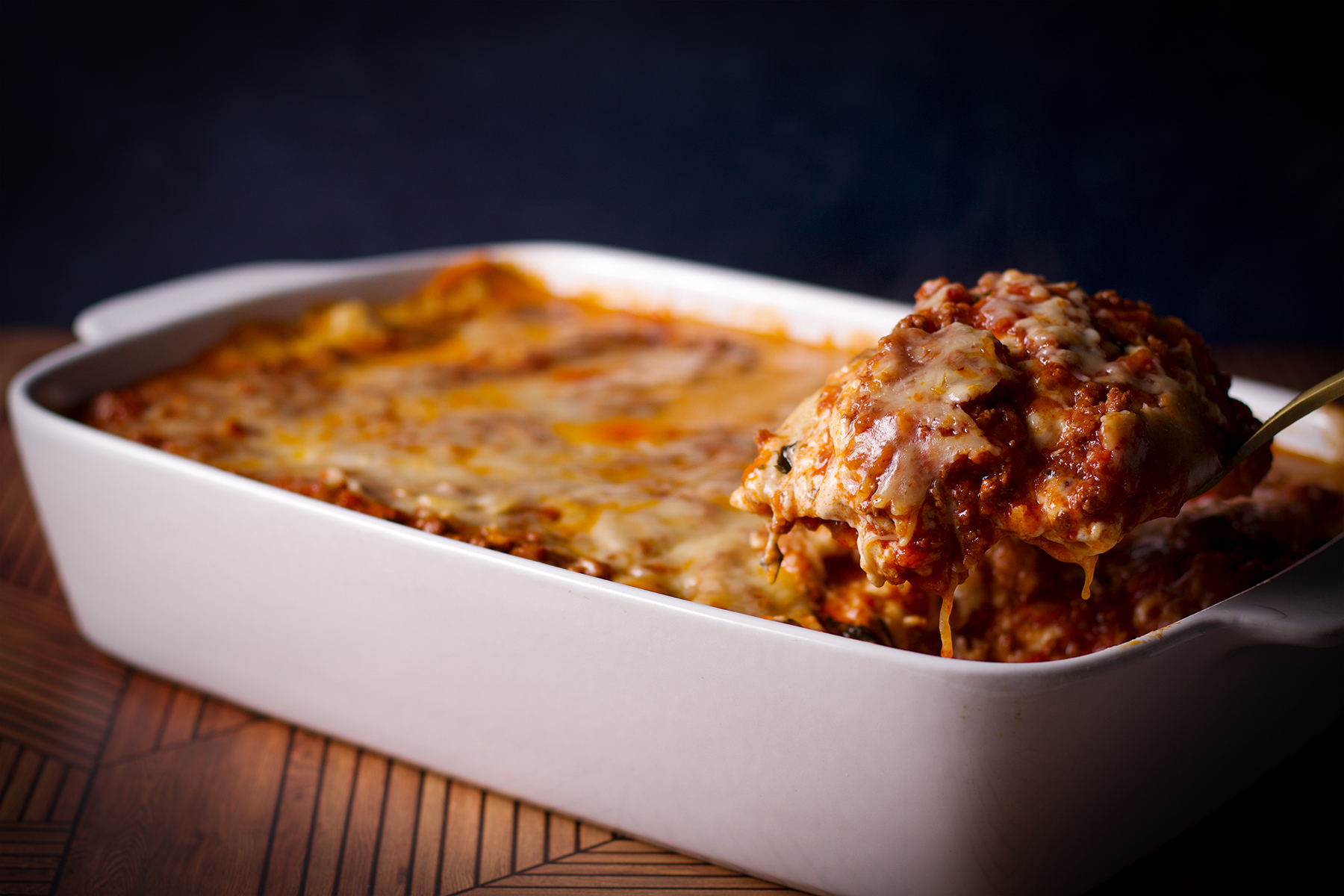Are you tired of dry, overcooked lasagna when you try to reheat it after freezing? Following these instructions and tips on how to reheat frozen lasagna, you’ll be able to enjoy it perfectly moist and delicious every time.

Lasagna is a classic comfort food that’s perfect for meal prepping in budget-friendly food storage containers or feeding a crowd. But sometimes, when you go to reheat it, it can turn out dry and overcooked or cold in the middle and rubbery around the edges.
The good news is that there are several excellent ways to reheat lasagna that's been refrigerated or frozen without drying it out.
Below are the best ways to reheat lasagna and 5 top tips to prevent it from drying out and getting rubbery or tough.
Jump to:

+ Subscribe to my newsletter for new and exclusive recipes in your in-box every month! As a full time traveler, living, working, cooking, and baking from a 5th wheel RV, it's also where I share our experiences of life on the road.
Favorite Lasagna Recipes
It's hard to beat the classic cheesy lasagna with sausage and marinara that's pictured above. This recipe includes plenty of cheese and Italian sausage but what really sets it apart is the rich homemade marinara sauce.
Lasagna Bolognese begins, of course, with Bolognese sauce, a gorgeous sauce that includes pancetta (or bacon) and ground beef cooked slowly in wine and tomatoes until it's incredibly rich and flavorful. Instead of ricotta, lasagna bolognese includes layers of creamy parmesan béchamel. It's rich, creamy, and reheats particularly well!

For a completely unique spin on lasagna bake an Asian Short Rib Lasagna made with chunks of tender slow cooker short ribs are layered between wonton wrappers, white cheddar cheese, and creamy béchamel sauce.
I also love this lazy baked lasagna with frozen cheese ravioli from Sarah at Front Range Fed. The recipe uses frozen ravioli to make a pan of cheesy lasagna lickity-split!
And for two mouthwatering vegetarian options try this skillet vegetable lasagna and this lasagna béchamel with mushroom ragù.

Reheating Lasagna in the Oven
The oven is probably the best way to reheat a whole lasagna, and for good reason. It allows you to get that perfectly browned, crispy top layer of cheese, while also heating the noodles and filling evenly. Here’s how to do it:
- Take the lasagna out of the freezer and let it thaw in the refrigerator overnight. If the lasagna is not already in an oven-safe dish, it can be helpful to transfer it to one while it's still frozen or partially frozen.
- Preheat the oven or toaster oven to 350°F (180°C).
- Cover the lasagna with foil and bake for about 30 to 40 minutes, or until it is heated through. You can check the temperature with a meat thermometer to make sure it has reached at least 165°F (74°C).
- Once the lasagna is heated through, remove the foil and broil it for a few minutes to get the top nice and browned, if desired.
- Let the lasagna rest for a few minutes before serving to allow the heat to distribute evenly.
It is important to make sure the filling is heated evenly throughout. A meat thermometer is the best way to check for doneness.
If you have an air fryer that will fit your pan, you can follow these same instructions but change the cooking temperature to 325°F (163°C) and the cooking time to 24 to 32 minutes.
Reheating Lasagna in the Microwave
The microwave is a quick and convenient way to reheat individual lasagna slices from the refrigerator, especially if you’re short on time. Just keep in mind that it won’t give you the same crispy top layer as the oven. Here’s the process:
- Place a slice of refrigerated lasagna on a microwave-safe plate or dish. A mini pie pan is the perfect size for a single slice.
- Add a few tablespoons of water to the plate, to help keep the lasagna from drying out.
- Cover the plate with a damp paper towel or a microwavable lid.
- Heat the lasagna on high power for 1 to 2 minutes, or until it is heated through.
If you’re reheating multiple slices of lasagna, you may need to add an additional minute or two of cooking time.
One thing to keep in mind when reheating lasagna in the microwave is to avoid overcooking it. Lasagna tends to dry out quickly when microwaving, so it’s important to keep an eye on it and stop cooking as soon as it’s heated through.
You'll also get a better result from reheating small slices. If reheating a large slice of lasagna, just cut it in half or in thirds and spread the pieces out a bit on the plate.
Combining Both Methods
To reheat frozen lasagna by combining oven and microwave cooking, use the following method:
- Take the lasagna out of the freezer and allow it to thaw in the refrigerator overnight. If the lasagna is not already in an oven-safe dish, it can be helpful to move it to one while it's still frozen or partially frozen.
- Preheat your oven to 350°F (180°C).
- Cover the lasagna with foil and bake for about 20 minutes, or until it is starting to heat through.
- Remove the foil and cook in the microwave on high power until it is fully heated through. Start by heating it for 5 minutes, then heat in 2 minute increments until heated through.
- If the top of the lasagna is not as browned as you’d like, you can broil it for a few minutes to get it nice and crispy.
- Let the lasagna rest for a few minutes before serving to allow the heat to distribute evenly.
This method allows you to get the benefits of baking and microwaving — the oven helps heat the lasagna evenly, while the microwave finishes the job quickly and ensures that it is fully heated through. Just make sure to keep an eye on the lasagna as it cooks to avoid drying it out, and be careful when removing it from the microwave as it will be hot.

Top tips!
By following these 5 tips, you’ll be able to reheat your lasagna without drying it out. Whether you’re reheating leftovers or cooking a frozen lasagna, these tips will help you achieve the perfect balance of moisture and flavor.
So the next time you’re craving a warm, comforting serving of lasagna, don’t be afraid to break out the leftovers. With a little bit of care and attention, you can easily reheat lasagna without drying it out.
- Thaw the lasagna before reheating
One of the biggest mistakes people make when reheating lasagna is trying to cook it while it’s still frozen. This can lead to uneven heating and a dry, overcooked final product.
Instead, take the lasagna out of the freezer and let it thaw in the refrigerator overnight.
- Use an oven-safe dish and cover it with foil
To reheat your lasagna, preheat your oven to 350°F (180°C) and place the lasagna in an oven-safe dish. If your lasagna has not been frozen in an oven safe container it can be helpful to transfer it to one while it's still frozen or partially frozen.
Cover the dish with foil to keep the lasagna moist while it cooks. The foil will also help to prevent the top from getting too browned or dried out.
Spray the foil or parchment paper with a bit of non-stick baking spray to prevent cheese from sticking to it!
- Check the temperature with a meat thermometer
One of the best ways to ensure that your lasagna is fully cooked and safe to eat is to use a meat thermometer. Insert the thermometer into the center of the lasagna and make sure it reads at least 165°F (74°C). This will ensure that the lasagna is heated through and any bacteria that may be present is killed.
- Let the lasagna rest before serving
After your lasagna is heated through, let it rest for a few minutes before serving. This will allow the heat to distribute evenly and ensure that every bite is just as moist and delicious as the last.
What to Serve with Lasagna
Lasagna is a meal unto itself and really doesn't need to be served with anything except a fork. But, I usually like to serve it with a salad or a green vegetable of some kind. My two favorite salads to serve with lasagna are classic Caesar topped with marinated roasted bell peppers and Israeli salad.
If you're eating reheated leftover lasagna for lunch, try it with strawberry lemonade tea which is one of the best Starbucks drinks ever. I especially love this lunch in the summer when I've made skillet vegetable lasagna earlier in the week.
Don't forget dessert! My three favorite desserts to pair with lasagna are:
- Olive Oil Cake with Lemon Mascarpone Pastry Cream
- Orange Olive Oil Cake with Mascarpone Frosting
- Cannoli Napoleon

And, if you’re looking for an after-dinner digestive, an Italian limoncello is the perfect ending to any Italian inspired meal.


+ Subscribe to my newsletter for new and exclusive recipes in your in-box every month! As a full time traveler, living, working, cooking, and baking from a 5th wheel RV, it's also where I share our experiences of life on the road.
This post originally appeared on Food Drink Life.






Comments
No Comments